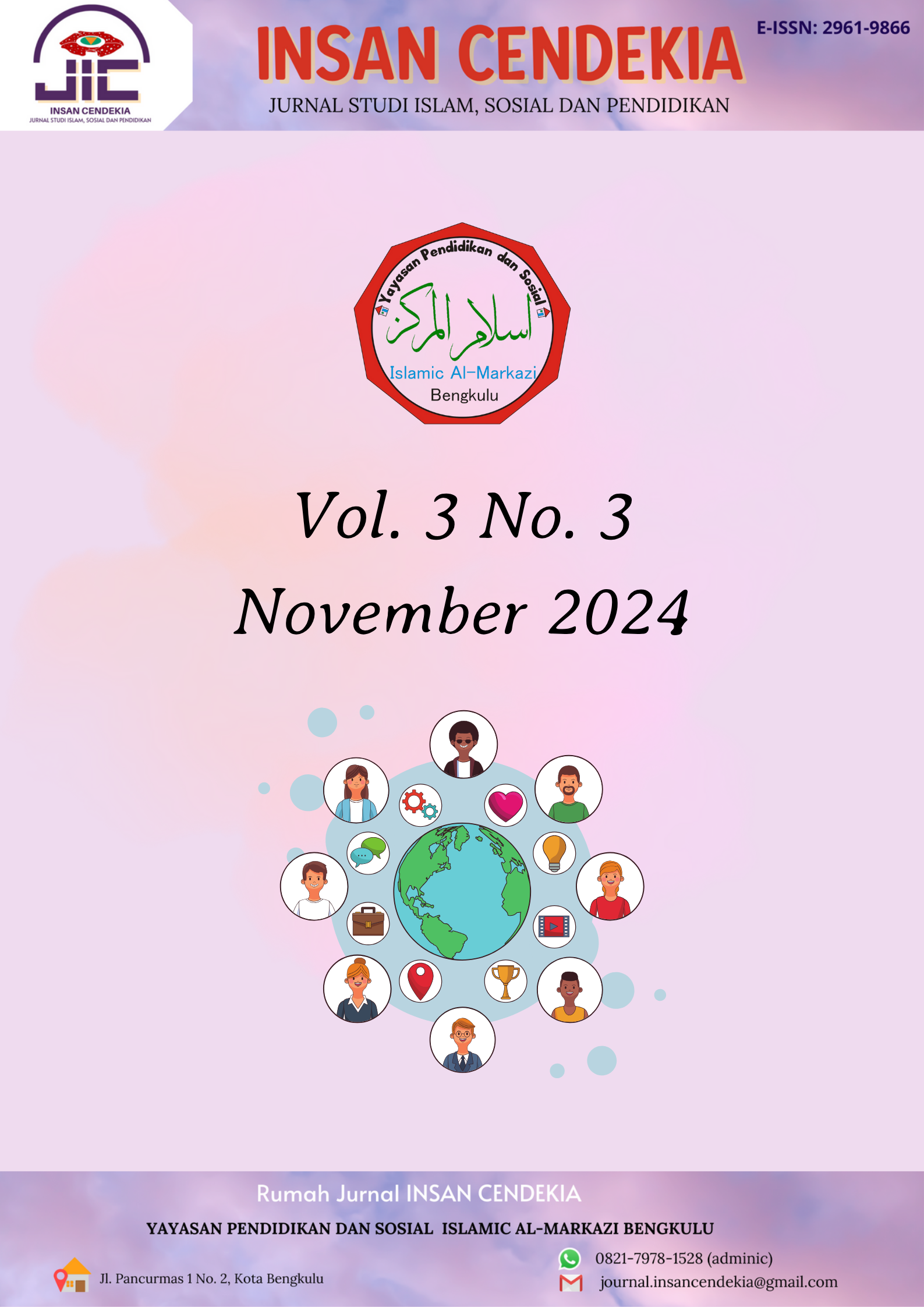OPTIMALISASI PERANCANGAN KEGIATAN SOSIAL YANG EFEKTIF DAN INOVATIF DALAM PEMBELAJARAN BAHASA INGGRIS MENGGUNAKAN SMART FORMULA
Keywords:
Social activity design, ELT, SMART formulaAbstract
The mini workshop “Learning to Design Social Activities in ELT Using The SMART Formula” was organized with the aim of improving student’s ability to design innovative and effective social activities in English language learning. This activitiesy was held on May 10,2025 at the Training Building with the duration five hours, it was attended by 22 female participants and 3 male participants were students from UIN Fatmawati Sukarno Bengkulu, consisting of several study programs, including PGMI, Sharia Economics, Da’wah Management, and Arabic Language Educarion. The workshop began with the delivery of material by resource person Yashori Revola, M.Pd regarding the basic concepts of social project design and the application of the SMART formula as a planning tool that is Specific, Measurable, Achievable, Relevant, and Time bound. Next, resource person Endang Saputra, S.Pd.I.,CT guided participants in the practice of making project designs that integrate the teories that have been learned. Participants then presented their project designs and received constructive feedback from the resource person. The result of the activity showed an increase in participants understanding and skills in designing structured and applicable ELT project. This workshop provides an interactive learning experience ans supports the development of student competencies in the context of English language learning and student organizations.
References
Doran, G. T. (1981). There's a S.M.A.R.T. way to write management’s goals and objectives. Management Review, 70(11), 35–36.
Dörnyei, Z. (2001). Motivational strategies in the language classroom. Cambridge University Press.
Ellis, R. (2003). Task-based language learning and teaching. Oxford University Press.
Hakim, M. A. R., Amrulin, P. K., Zasrianita, F., & Kurniawan, Y. S. (2023). The Implication of Cooperative Integrated Reading and Composition (CIRC) Technique on English Reading Comprehension for Madrasah Aliyah Students. Linguistic, English Education and Art (LEEA) Journal, 6(2), 233-245
Hakim, M.A.R., Revola, Y., Serasi, R. (2024). Kompetensi Pedagogik Guru Bahasa Inggris di Madrasah & Pesantren. Alfabeta
Kerzner, H. (2013). Project management: A systems approach to planning, scheduling, and controlling (11th ed.). Wiley.
Krashen, S. D. (1982). Principles and practice in second language acquisition. Pergamon Press.
Kolb, D. A. (1984). Experiential Learning: Experience as the Source of Learning and Development. Englewood Cliffs, NJ: Prentice-Hall.
Larsen-Freeman, D. (2000). Techniques and principles in language teaching (2nd ed.). Oxford University Press.
Laal, M., & Ghodsi, S. M. (2012). Benefits of Collaborative Learning. Procedia - Social and Behavioral Sciences, 31, 486–490.
Locke, E. A., & Latham, G. P. (2002). Building a practically useful theory of goal setting and task motivation: A 35-year odyssey. American Psychologist, 57(9), 705–717.
Prince, M. (2004). Does Active Learning Work? A Review of the Research. Journal of Engineering Education, 93(3), 223–231.
Nation, I. S. P., & Newton, J. (2009). Teaching ESL/EFL listening and speaking. Routledge.
Schunk, D. H. (2012). Learning theories: An educational perspective (6th ed.). Pearson.
Thomas, J. W. (2000). A Review of Research on Project-Based Learning. San Rafael, CA: The Autodesk Foundation.
Vygotsky, L. S. (1978). Mind in society: The development of higher psychological processes (M. Cole, V. John-Steiner, S. Scribner, & E. Souberman, Eds.). Harvard University Press.
Zimmerman, B. J. (2002). Becoming a self-regulated learner: An overview. Theory into Practice, 41(2), 64–70. https://doi.org/10.1207/s15430421tip4102_2.
Downloads
Published
Issue
Section
License
Copyright (c) 2025 Yosa Amelia, Rahmat Aldi Putra, Tria Nur Amanda, Oktavia Dwi Lestari, Resti Apisa Rani

This work is licensed under a Creative Commons Attribution-ShareAlike 4.0 International License.
LICENSE TO PUBLISH:
1. License
Authors who publish with Insan Cendekia agree to the following terms: Authors retain copyright and grant the Insan Cendekia right of first publication with the work simultaneously licensed under the Creative Commons Attribution-ShareAlike 4.0 International (CC BY-SA 4.0) license, that allows others to share (copy and redistribute the material in any medium or format) and adapt (remix, transform, and build upon the material) the work for any purpose, even commercially with an acknowledgement of the work's authorship and initial publication in Insan Cendekia.
2. Author’s Warranties
The author warrants that the article is original, written by stated author/s, has not been published before, contains no unlawful statements, does not infringe the rights of others, is subject to copyright that is vested exclusively in the author and free of any third party rights, and that any necessary written permissions to quote from other sources have been obtained by the author/s.
3. User Rights
Under the Creative Commons Attribution license, the author(s) and users are free to share (copy, distribute and transmit the contribution).
4. Rights of Authors
Authors retain the following rights:
- copyright, and other proprietary rights relating to the article, such as patent rights,
- the right to use the substance of the article in future own works, including lectures and books,
- the right to reproduce the article for own purposes, provided the copies are not offered for sale,
- the right to self-archive the article.
5. Co-Authorship
If the article was prepared jointly with other authors, the signatory of this form warrants that he/she has been authorized by all co-authors to sign this agreement on their behalf, and agrees to inform his/her co-authors of the terms of this agreement.
6. Termination
This agreement can be terminated by the author or Insan Cendekia upon two months’ notice where the other party has materially breached this agreement and failed to remedy such breach within a month of being given the terminating party’s notice requesting such breach to be remedied. No breach or violation of this agreement will cause this agreement or any license granted in it to terminate automatically or affect the definition of Insan Cendekia.
7. Royalties
This agreement entitles the author to no royalties or other fees. To such extent as legally permissible, the author waives his or her right to collect royalties relative to the article in respect of any use of the article by Insan Cendekia or its sublicensee.
8. Miscellaneous
The Insan Cendekia will publish the article, or arrange for its publication, provided that the editorial process is successfully completed and the journal or its sublicensee becomes obligated to publish the article. The Insan Cendekia reserves the right to edit the article for consistency in punctuation, spelling, capitalization, and style, as deemed appropriate.




